Yuming Su
MLatom 3: Platform for machine learning-enhanced computational chemistry simulations and workflows
Oct 31, 2023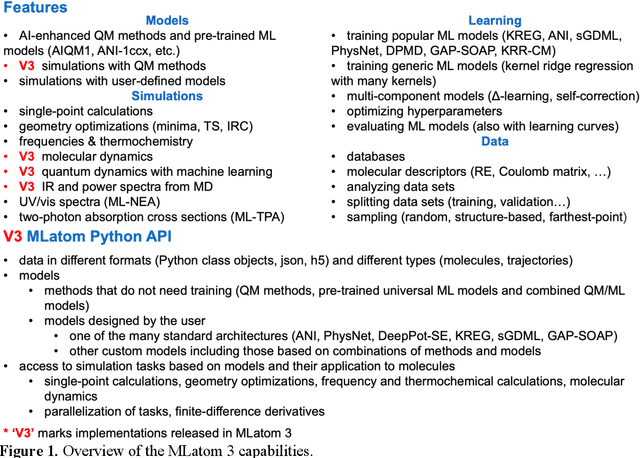
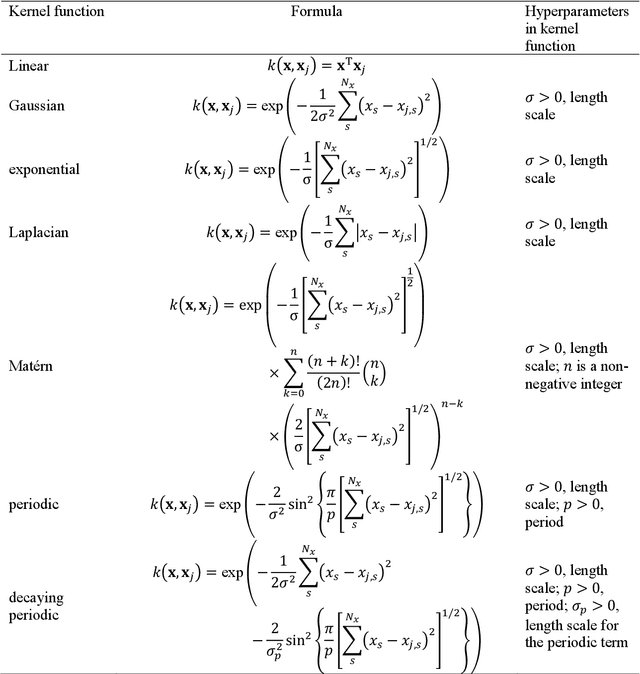
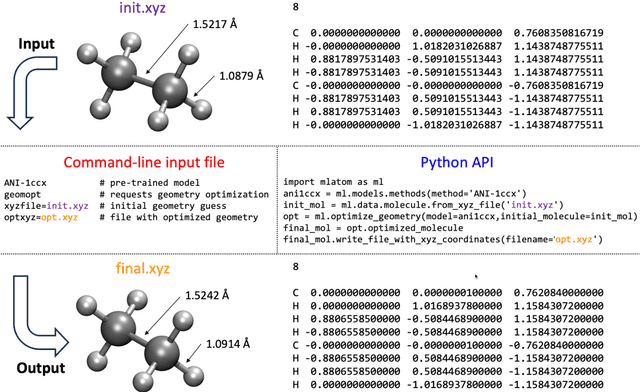
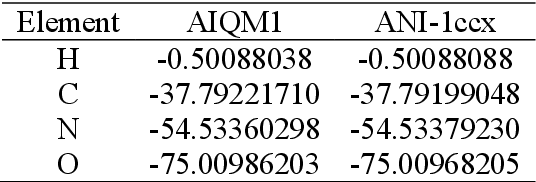
Abstract:Machine learning (ML) is increasingly becoming a common tool in computational chemistry. At the same time, the rapid development of ML methods requires a flexible software framework for designing custom workflows. MLatom 3 is a program package designed to leverage the power of ML to enhance typical computational chemistry simulations and to create complex workflows. This open-source package provides plenty of choice to the users who can run simulations with the command line options, input files, or with scripts using MLatom as a Python package, both on their computers and on the online XACS cloud computing at XACScloud.com. Computational chemists can calculate energies and thermochemical properties, optimize geometries, run molecular and quantum dynamics, and simulate (ro)vibrational, one-photon UV/vis absorption, and two-photon absorption spectra with ML, quantum mechanical, and combined models. The users can choose from an extensive library of methods containing pre-trained ML models and quantum mechanical approximations such as AIQM1 approaching coupled-cluster accuracy. The developers can build their own models using various ML algorithms. The great flexibility of MLatom is largely due to the extensive use of the interfaces to many state-of-the-art software packages and libraries.
Potential Advantages of Peak Picking Multi-Voltage Threshold Digitizer in Energy Determination in Radiation Measurement
Mar 08, 2021
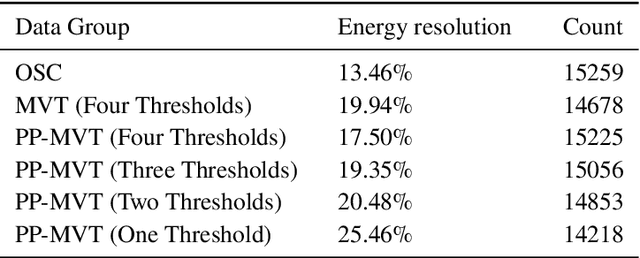
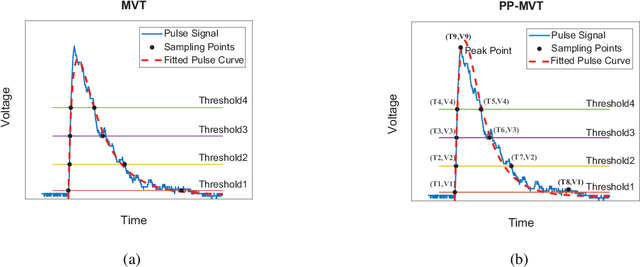
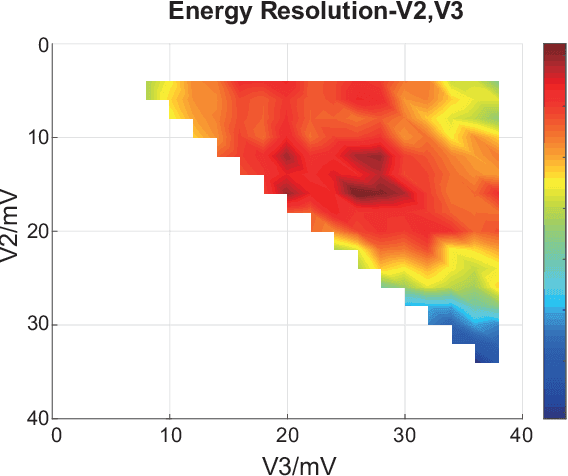
Abstract:The Multi-voltage Threshold (MVT) method, which samples the signal by certain reference voltages, has been well developed as being adopted in pre-clinical and clinical digital positron emission tomography(PET) system. To improve its energy measurement performance, we propose a Peak Picking MVT(PP-MVT) Digitizer in this paper. Firstly, a sampled Peak Point(the highest point in pulse signal), which carries the values of amplitude feature voltage and amplitude arriving time, is added to traditional MVT with a simple peak sampling circuit. Secondly, an amplitude deviation statistical analysis, which compares the energy deviation of various reconstruction models, is used to select adaptive reconstruction models for signal pulses with different amplitudes. After processing 30,000 randomly-chosen pulses sampled by the oscilloscope with a 22Na point source, our method achieves an energy resolution of 17.50% within a 450-650 KeV energy window, which is 2.44% better than the result of traditional MVT with same thresholds; and we get a count number at 15225 in the same energy window while the result of MVT is at 14678. When the PP-MVT involves less thresholds than traditional MVT, the advantages of better energy resolution and larger count number can still be maintained, which shows the robustness and the flexibility of PP-MVT Digitizer. This improved method indicates that adding feature peak information could improve the performance on signal sampling and reconstruction, which canbe proved by the better performance in energy determination in radiation measurement.
 Add to Chrome
Add to Chrome Add to Firefox
Add to Firefox Add to Edge
Add to Edge